In the sweltering heat of Japanese summers, the gentle glow of fireflies illuminates the darkness with their ephemeral light. Yet beyond their natural beauty, these luminescent insects hold a special place in Japanese folklore and mythology. The most poignant of these traditions is the belief that fireflies, particularly a mystical type known as “hotarubi” (firefly light), serve as guides for lost souls navigating the boundary between life and death. This centuries-old belief intertwines the natural phenomenon of bioluminescence with spiritual meaning, creating a rich tapestry of cultural significance that continues to inspire art, literature, and spiritual practices in Japan today.
Origins of the Firefly Soul Guide Myth
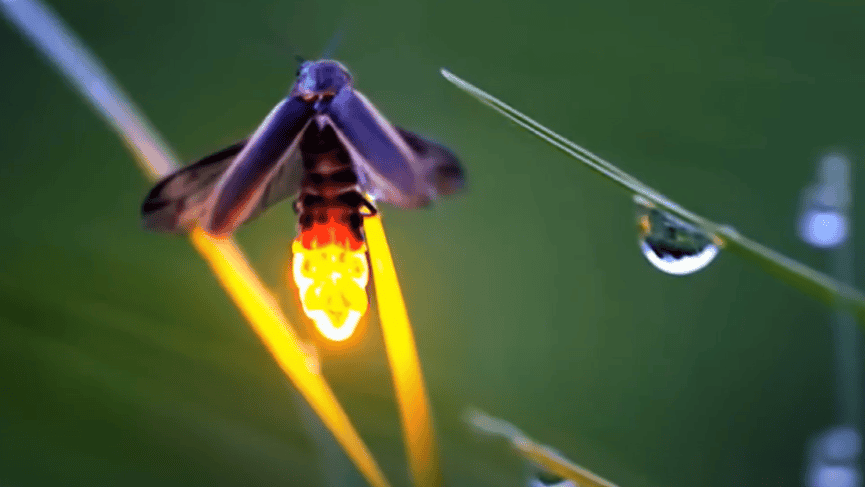
The association between fireflies and the souls of the dead traces back to ancient Shinto and Buddhist beliefs in Japan. In early Shinto tradition, fireflies were believed to be the physical manifestation of the souls of warriors who had fallen in battle. This belief gained prominence during the Heian period (794-1185 CE), when tales of fireflies rising from battlefields became common in oral traditions. Buddhist influence later added layers to this mythology, incorporating ideas about reincarnation and the transition of souls between realms. The earliest written accounts of fireflies guiding souls appear in the “Konjaku Monogatarishū,” a collection of tales compiled in the late Heian period, where fireflies are described as “lanterns of the other world” that illuminate the path for souls seeking peace or rebirth.
Hotarubi: The Special Firefly of the Spirit World

In Japanese mythology, not all fireflies are believed to guide souls. A specific type called “hotarubi” (火垂る, literally “hanging fire”) is considered particularly spiritual. Unlike ordinary fireflies, hotarubi are described as having a more ethereal, blueish-white glow rather than the yellow-green luminescence of common fireflies. These special insects are said to appear primarily during Obon, the festival of the dead, or in places where souls are believed to be trapped between worlds. According to folk beliefs, hotarubi cannot be captured or contained and will extinguish their light if approached too closely by the living—symbolizing the unbridgeable gap between the world of the living and the realm of spirits. These mystical fireflies are often described as moving in patterns that appear deliberate rather than random, as if leading something—or someone—unseen by human eyes.
The Symbolism of Light in the Darkness
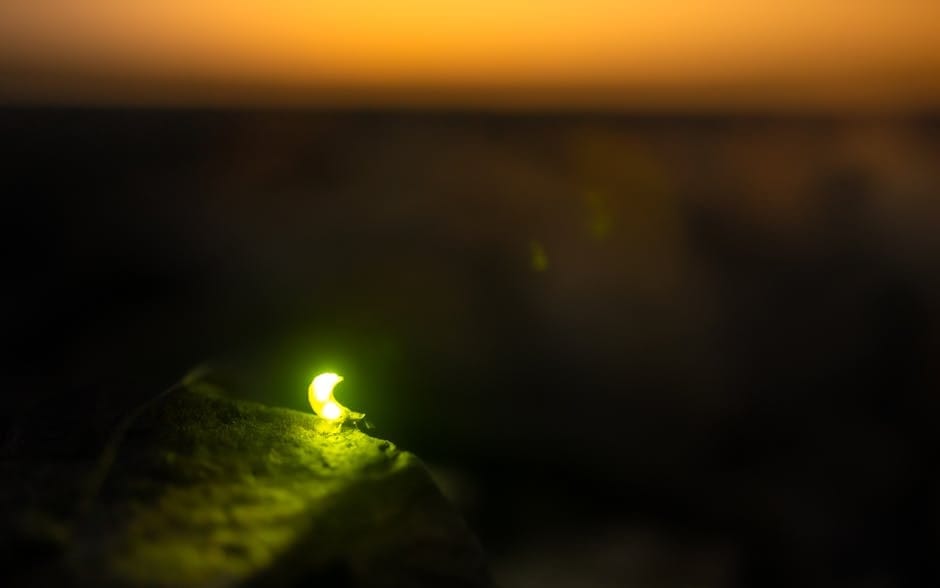
The firefly’s role as a soul guide is deeply connected to the symbolic significance of light in Japanese spiritual thought. In a culture where purification and clarity are central spiritual concepts, the firefly’s ability to produce “cold light”—illumination without heat—represents pure spiritual energy untainted by worldly attachments. This clean light is considered perfect for guiding souls who might otherwise become confused or lost in the darkness between worlds. The transient nature of the firefly’s glow—flickering briefly before disappearing—also mirrors Buddhist concepts of impermanence (mujō) and the fleeting nature of existence. The firefly thus becomes a powerful metaphor for the soul’s journey: brief, luminous, and following a predetermined path through darkness before ultimately fading away or transforming into something new.
Fireflies and the Obon Festival Connection
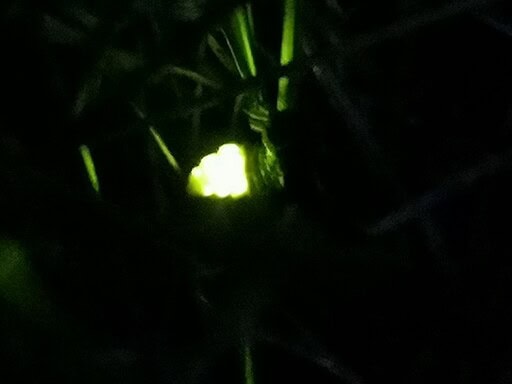
The most significant cultural manifestation of the firefly soul guide belief occurs during Obon, Japan’s annual festival honoring ancestral spirits. Held typically in mid-August (though dates vary by region), Obon is when the boundary between the world of the living and the dead is believed to be at its thinnest. During this period, ancestral spirits are welcomed back to the world of the living for a brief reunion with their families. Fireflies play a crucial role in this tradition, as they are thought to help guide these returning souls to their family homes and back to the spirit world when the festival concludes. In many rural areas of Japan, the appearance of unusually large numbers of fireflies during Obon is considered confirmation that the ancestors have successfully found their way. Some families even leave small lanterns inspired by firefly light near bodies of water to help guide their ancestors’ spirits home.
Regional Variations of the Firefly Soul Guide
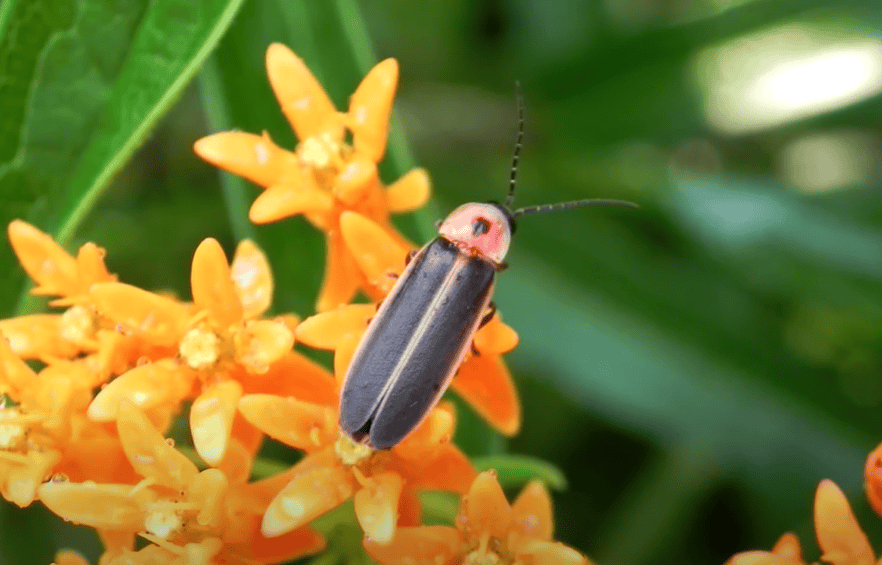
The firefly as soul guide appears in different forms across Japan’s diverse regions. In the Tohoku region of northern Japan, fireflies are specifically associated with the souls of children who died young, their gentle light representing innocence and purity. In parts of Kyushu, especially around Nagasaki, fireflies are believed to be reincarnations of people who drowned, with their lights helping to prevent similar tragedies by warning travelers of dangerous waters at night. The Kansai region has traditions of firefly festivals that specifically honor warriors from the Genpei War (1180-1185), where massive gatherings of fireflies are seen as the souls of fallen samurai returning to battlefields where they died. These regional variations demonstrate how the basic concept of fireflies as soul guides has been adapted to address specific cultural needs and historical traumas across different Japanese communities.
Artistic Representations in Literature and Visual Arts
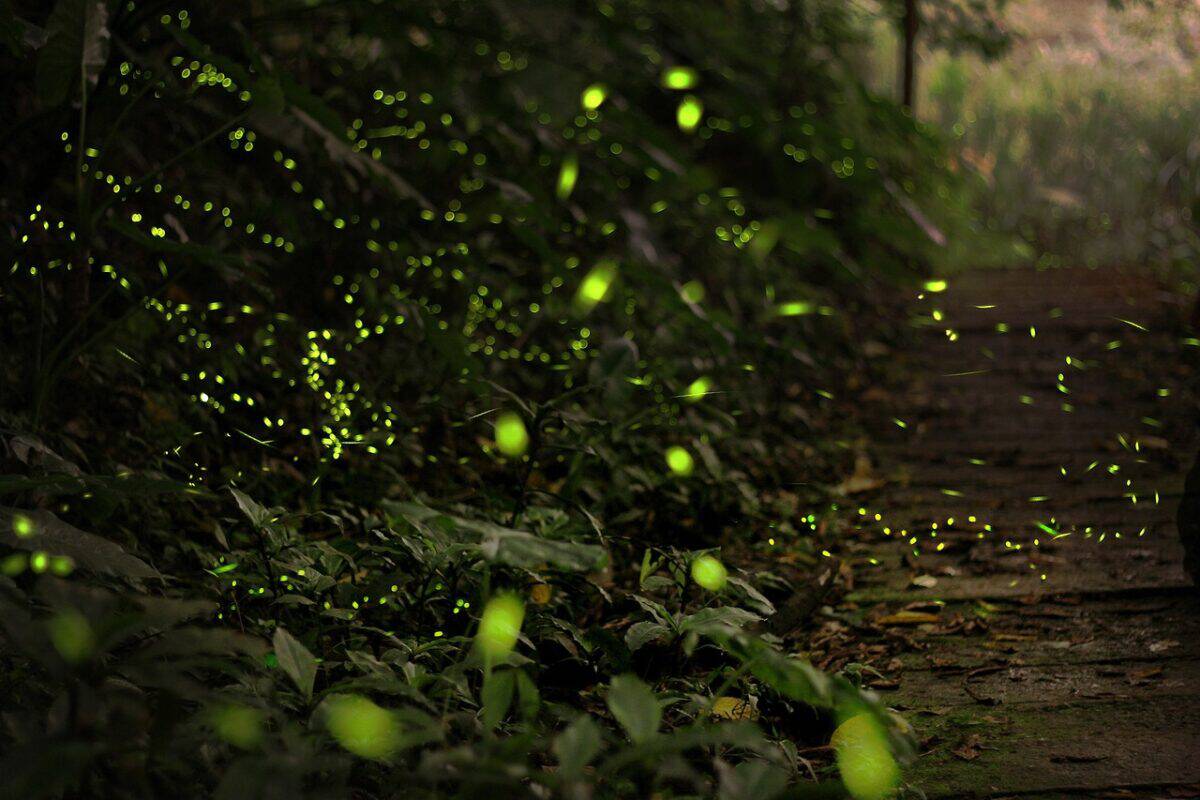
The poetic image of fireflies guiding souls has inspired countless works of Japanese art and literature throughout history. In classical Japanese poetry, particularly haiku and tanka, fireflies frequently appear as metaphors for brief lives and spiritual journeys. The renowned poet Matsuo Bashō (1644-1694) wrote several famous haiku featuring fireflies as symbols of transient beauty and spiritual significance. In visual arts, the motif appears in ukiyo-e woodblock prints, where fireflies are often depicted over water—symbolizing the boundary between worlds. The tradition continues in modern Japanese cinema and anime, most famously in Studio Ghibli’s “Grave of the Fireflies” and the animated film “Into the Forest of Fireflies’ Light” (Hotarubi no Mori e), which both draw on the spiritual associations of fireflies to explore themes of loss, memory, and the connection between the living and the dead.
The Tale of the Firefly River Crossing

One of the most well-known folktales involving firefly soul guides is “Hotaru no Kawa Watari” (The Firefly River Crossing). In this story, a young woman dies before she can be reunited with her lover who has gone to war. Unable to find peace, her soul becomes lost at the banks of the river separating the world of the living from the afterlife. Taking pity on her, the gods transform her into the first hotarubi firefly, allowing her to use her light to search for her beloved. When the man eventually dies in battle, it is her firefly light that guides his soul across the river, allowing them to be reunited in the afterlife. This tale is often recounted during summer firefly-viewing events and has inspired numerous regional festivals where paper lanterns are floated on rivers to symbolize souls crossing over, guided by firefly light. The story reinforces the belief that fireflies serve not just as random guides but can represent specific souls with unfinished business or deep attachments.
Scientific Reality Behind the Myth
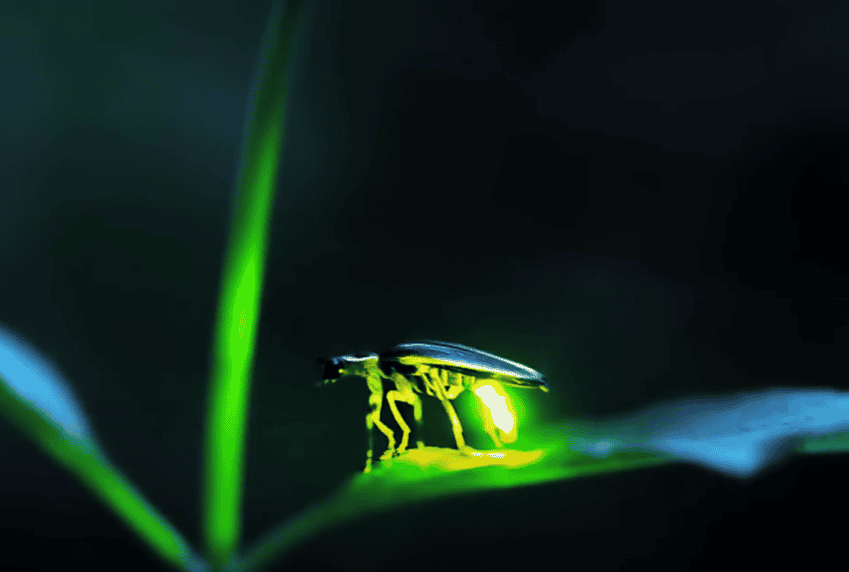
While deeply embedded in mythology, the firefly’s association with souls has interesting parallels to scientific reality. Japan is home to multiple species of fireflies, with the most common being Luciola cruciata (Genji firefly) and Luciola lateralis (Heike firefly)—named after the two warring clans in the Genpei War, further reinforcing their connection to fallen warriors. The insects produce light through a chemical reaction involving the compound luciferin, which creates a nearly 100% efficient “cold light” with minimal heat waste—a scientific fact that aligns with the spiritual conception of pure, untainted light. Fireflies in Japan are indeed most active during the warm, humid conditions of summer when Obon takes place. Many species gather near water, particularly in places with clean, unpolluted streams—often the same sites designated as spiritually significant in Shinto tradition. The insects’ preference for specific environmental conditions explains why they might appear to follow certain paths or gather in particular locations, lending credence to the belief that their movements are purposeful rather than random.
Firefly Conservation and Spiritual Beliefs
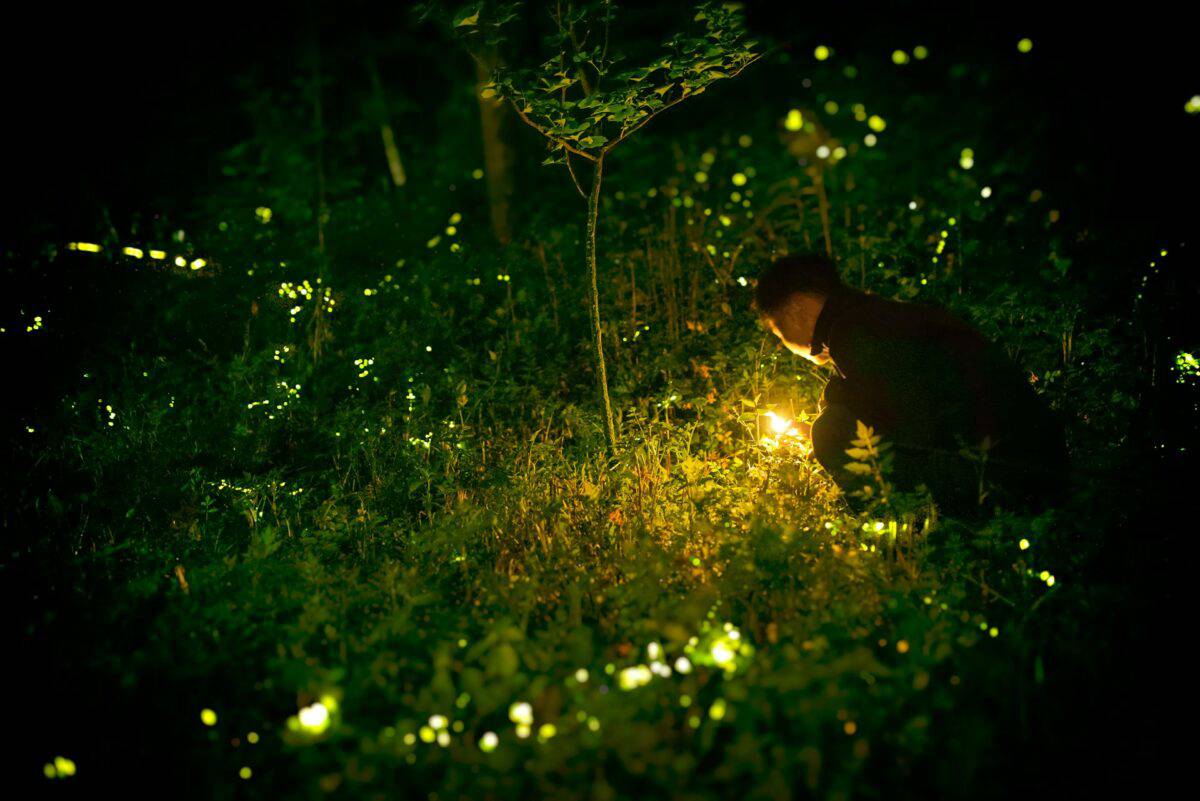
The spiritual significance of fireflies has played an important role in their conservation in Japan. Traditional beliefs about the insects’ connection to ancestral spirits have fostered a cultural reverence that extends to their natural habitats. Many Japanese communities have maintained “firefly sanctuaries” for centuries, protecting the clean waterways and natural vegetation that fireflies need to thrive. In the modern era, as firefly populations have declined due to pollution and habitat destruction, conservation efforts often invoke their cultural and spiritual importance alongside ecological concerns. Organizations like the Japan Firefly Society combine scientific research with cultural education, emphasizing that protecting fireflies means preserving both biodiversity and cultural heritage. This spiritual-ecological approach has been remarkably effective in rallying community support for environmental protection, demonstrating how traditional beliefs can complement and reinforce conservation science.
Fireflies in Modern Japanese Spirituality

Even in contemporary Japan, where traditional spiritual practices coexist with modern lifestyles, the belief in fireflies as soul guides maintains relevance. Following the 2011 Tohoku earthquake and tsunami, numerous accounts emerged from affected areas of unusual firefly activity, which many interpreted as manifestations of those lost in the disaster. Memorial services at temples and shrines sometimes incorporate firefly-viewing as a way to commune with departed souls, particularly for those whose bodies were never recovered. Some modern Japanese spiritual practitioners incorporate firefly symbolism into meditation practices focused on ancestors or personal transformation. Additionally, firefly-inspired decorations and motifs are common in contemporary funeral services and memorial items, offering a subtle reminder of the insects’ traditional role as guides between worlds. This continued spiritual significance demonstrates how ancient beliefs adapt to serve modern emotional and psychological needs, particularly around grief and remembrance.
Comparing Firefly Myths Across Cultures

While Japan’s tradition of fireflies guiding souls is distinctive, similar associations between bioluminescent insects and the spirit world exist across cultures. In parts of Southeast Asia, particularly among indigenous communities in Malaysia and Indonesia, fireflies are likewise associated with ancestral spirits, though often as messengers rather than guides. Native American traditions in parts of North America view fireflies as stars that have fallen to earth, carrying fragments of celestial wisdom. In certain Amazonian cultures, fireflies are believed to be the transformed eyes of shamans who continue to watch over their communities after death. What makes the Japanese tradition unique is its specific focus on the guiding function of fireflies and the elaborate cultural practices that have developed around this belief. While other cultures may see fireflies as spirits themselves or as messengers from the spirit world, the Japanese conception of fireflies as lantern-bearers lighting the way for traveling souls represents a distinct cultural adaptation to universal human questions about what happens after death and how the living remain connected to those who have passed on.
Conclusion: The Enduring Light of Tradition

The Japanese belief in fireflies as guides for lost souls represents more than just an ancient superstition—it embodies a profound cultural understanding of the relationship between nature and spirituality. Through centuries of artistic representation, festival celebrations, and oral tradition, this poetic conception of fireflies has illuminated the Japanese approach to death, memory, and the bonds that transcend physical existence. As environmental challenges threaten firefly populations worldwide, the cultural significance of these insects adds urgency to conservation efforts, reminding us that what we lose in biodiversity, we also lose in cultural heritage. Perhaps most importantly, the firefly soul guide tradition offers a beautiful metaphor for how humans across cultures seek to make sense of mortality—finding in nature’s most ephemeral and luminous creatures a perfect symbol for the brief but brilliant journey of the human soul through darkness into light.
- The Way Dogs Can Tell When You’re Sad - August 24, 2025
- Should We Reintroduce Wolves to More U.S. States? - August 24, 2025
- The Ultimate Guide to Spotting Owls in the Wild - August 24, 2025

